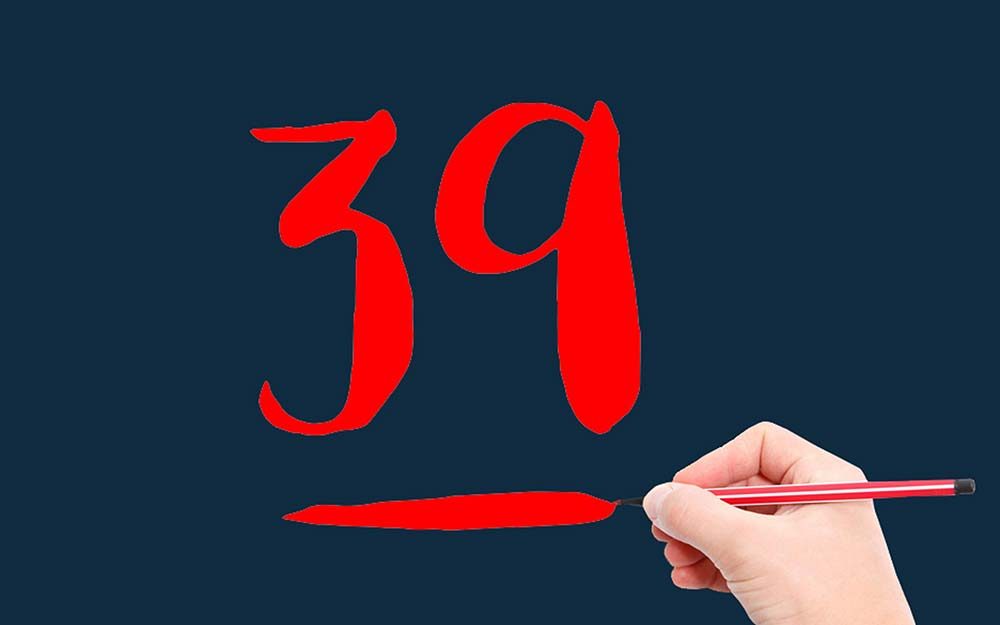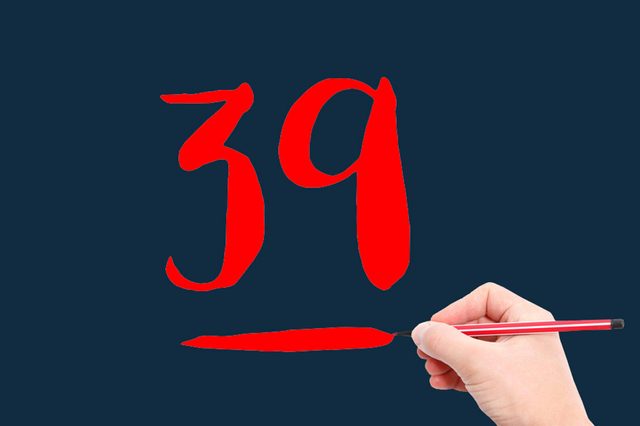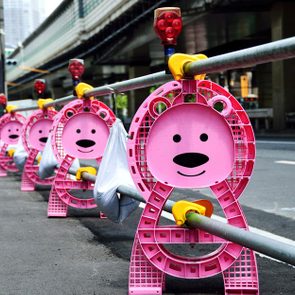The petite "39" is a bit of Japanese texting shorthand with plenty of cultural history and significance

Here’s Why the Number “39” Means “Thank You” in Japan


In Japan, slurping your food is considered polite, most of the island’s stoplights are blue instead of green and you can get sushi delivered via robot. Nothing out of the ordinary here. But why is it that when somebody texts you “39,” it’s considered a sign of great gratitude? What does 39 mean? The answer is a centuries-old trick of wordplay that’s infiltrated the digital age. Read on, and you’re sure to be cheering “39!” yourself.
Get Reader’s Digest’s Read Up newsletter for more humor, cleaning, travel, tech and fun facts all week long.
What does 39 mean?
In short, 39 means “thank you.” But just how did the number 39 came to be associated with the term “thank you”?
Japan’s Kanji language evolved out of traditional Chinese writing, naturally transforming over the centuries to suit Japanese grammar and inflection. As a result, each character in Kanji can be read multiple ways depending on which of several different reading systems is used. The Kanji character for the number 1, for example, has at least six different possible pronunciations (hitotsu, hito, hi, ichi, i and wan) in three different reading systems. Fortunately for the international community of word nerds, more word sounds means more word games—and that’s where 39 comes in.
One of the most popular forms of Japanese wordplay is numeric substitution—writing numerals in place of words or letters with the same phonetic value. We do this with English words and numbers all the time, coming up with half-numeric sentences like “You are 2 dang 1derful” or “It’s been 4ever since I last 8 a 2na fish sandwich.” Kanji can be manipulated the same way, only with six times as many opportunities for linguistic mischief. In the common on’yomi reading system, for example, the number 3 can be pronounced san, while the number 9 can be kyu. So if someone texts you “39” or “3 9,” you can read it as “san kyu”… aka “sankyu,” a Japanese-inflected version of the English “thank you.” (You’re welcome.)
What other numbers mean in Japanese texting
“39” has become common texting shorthand for gratitude in Japan, but it’s only the tip of the numeric wordplay iceberg. Here are a few other choice phrases to ponder on your next visit to Kyoto:
- 23 can be read as “ni san.” Cleverly, the Nissan car company likes to enter cars numbered 23 into many motorsport events.
- 29 can be read as “niku,” meaning “meat.” Some restaurants and grocers offer special meat promotions on the 29th day of each month.
- 573 can be read as “ko-na-mi.” Video game manufacturer Konami likes to use this number in high scores and other Easter eggs sprinkled throughout its games.
- 893 can be read “ya-ku-za.” The famous Yakuza organized crime syndicate takes its name from this number, which produces a losing hand in the traditional Japanese card game Oicho-Kabu. Today, with the crime syndicate better known than the card game, 893 is just considered an unlucky number.
- Need to remember the first nine digits of pi? 3.14159265 can be read as “san-i-shi-i-ko-ku-ni-mu-kou,” essentially meaning “An obstetrician faces toward a foreign country.” (That’s much easier to remember, yes?)
Now that we have our phonemic photon cannons firing properly, 39 for reading, friends! 39 very much.
Why trust us
At Reader’s Digest, we’re committed to producing high-quality content by writers with expertise and experience in their field in consultation with relevant, qualified experts. We rely on reputable primary sources, including government and professional organizations and academic institutions as well as our writers’ personal experiences where appropriate. We verify all facts and data, back them with credible sourcing and revisit them over time to ensure they remain accurate and up to date. Read more about our team, our contributors and our editorial policies.
Source:
- Ryotokuro: “39 = Thank you?”






















